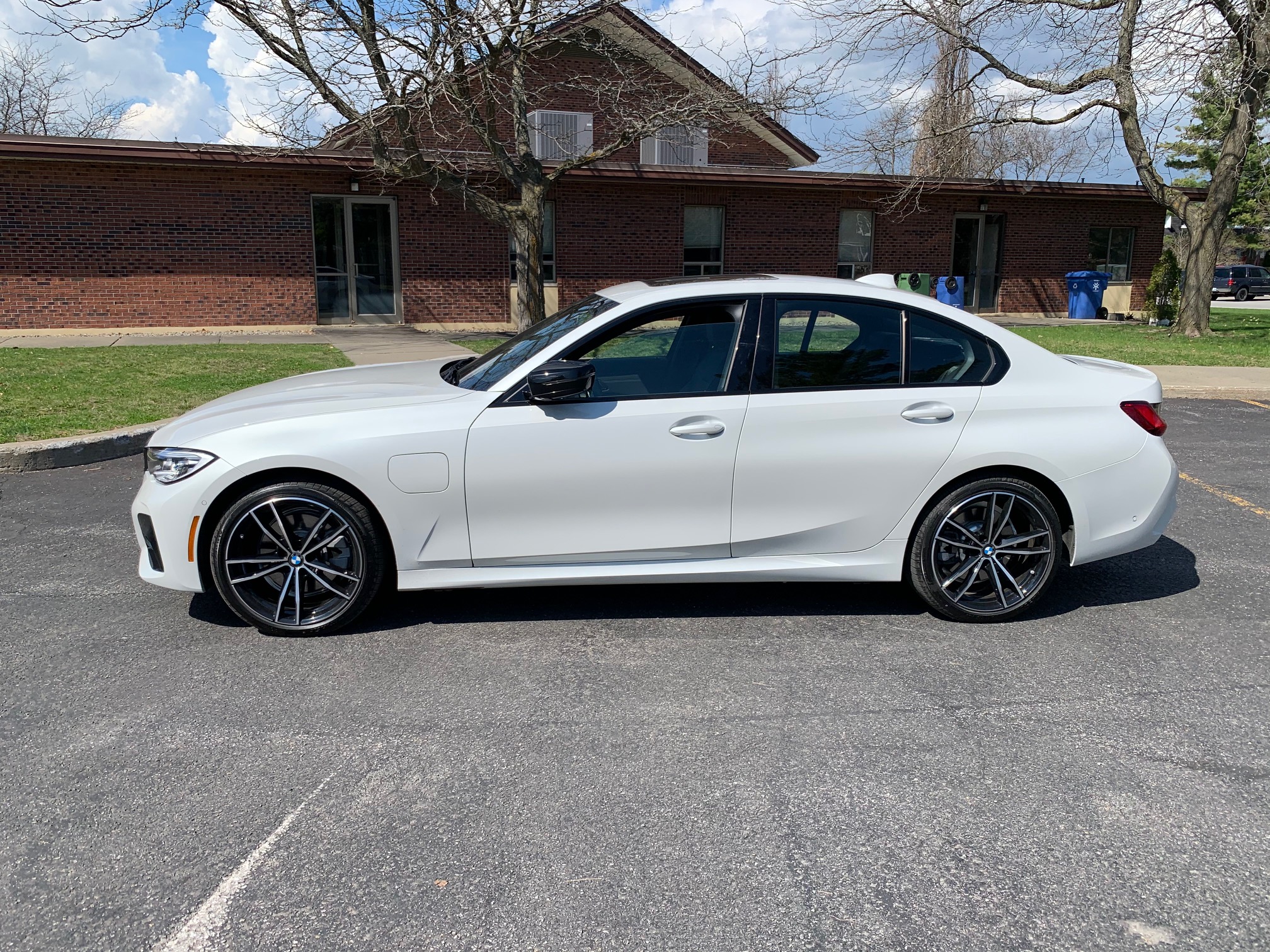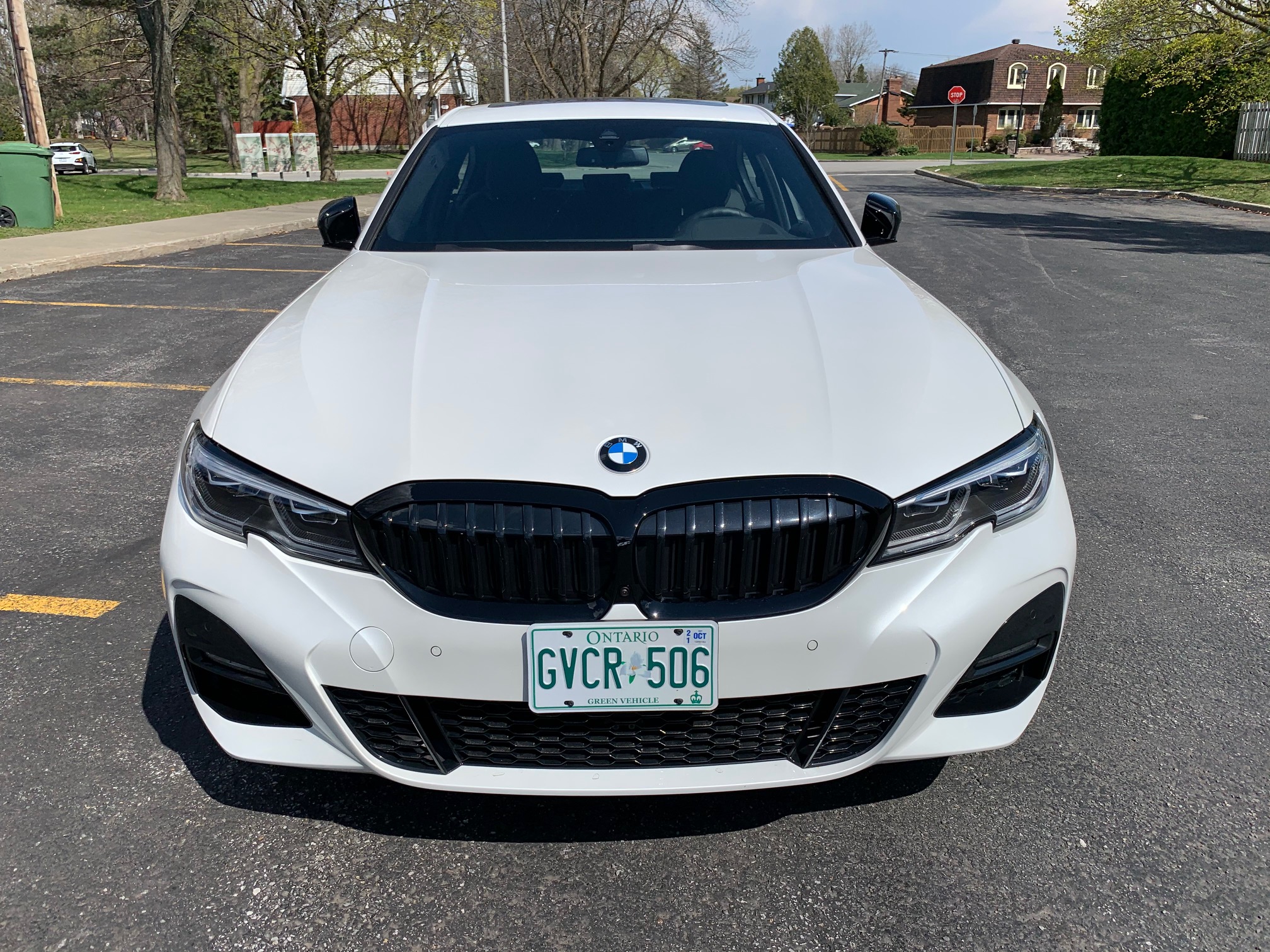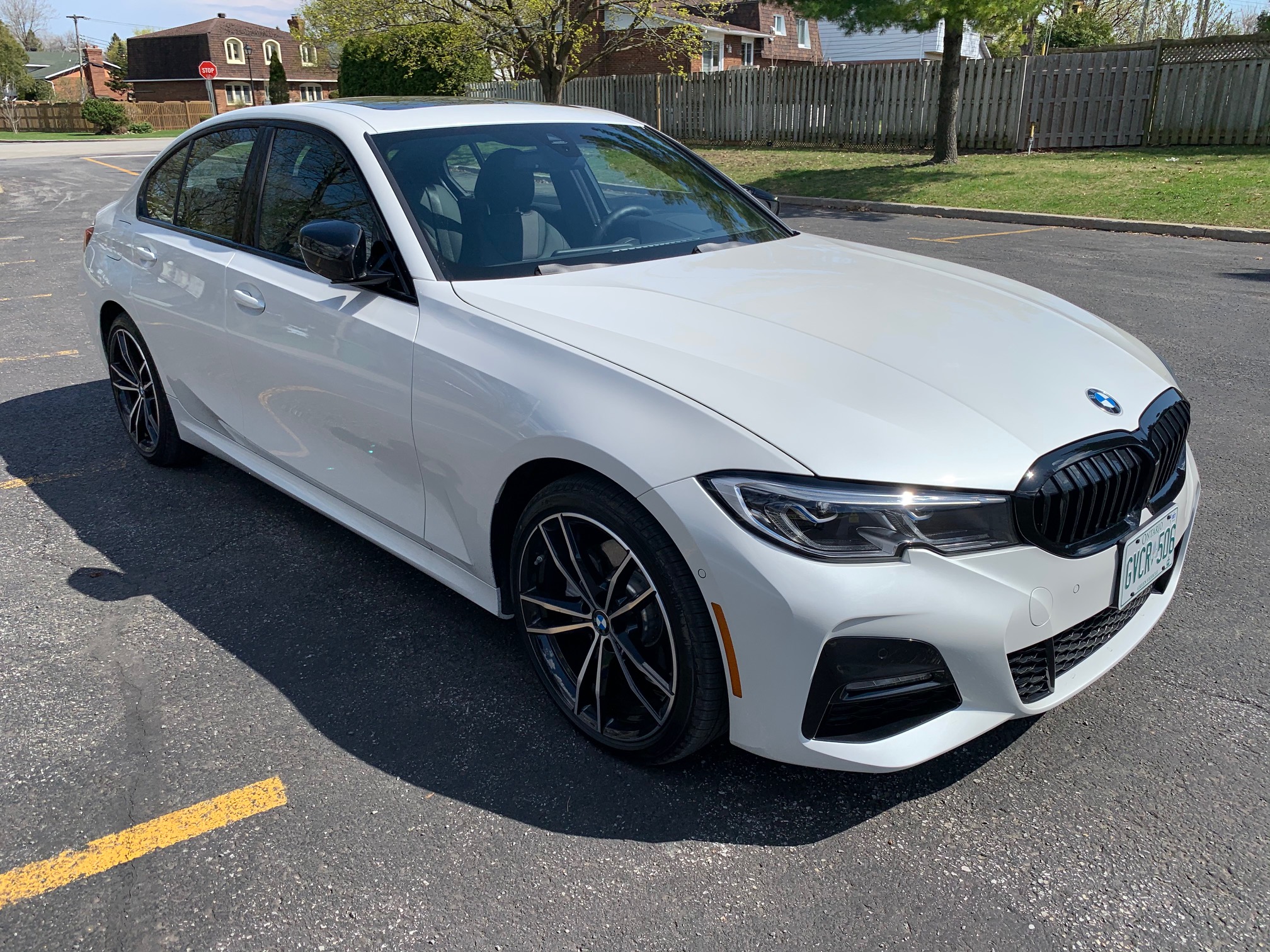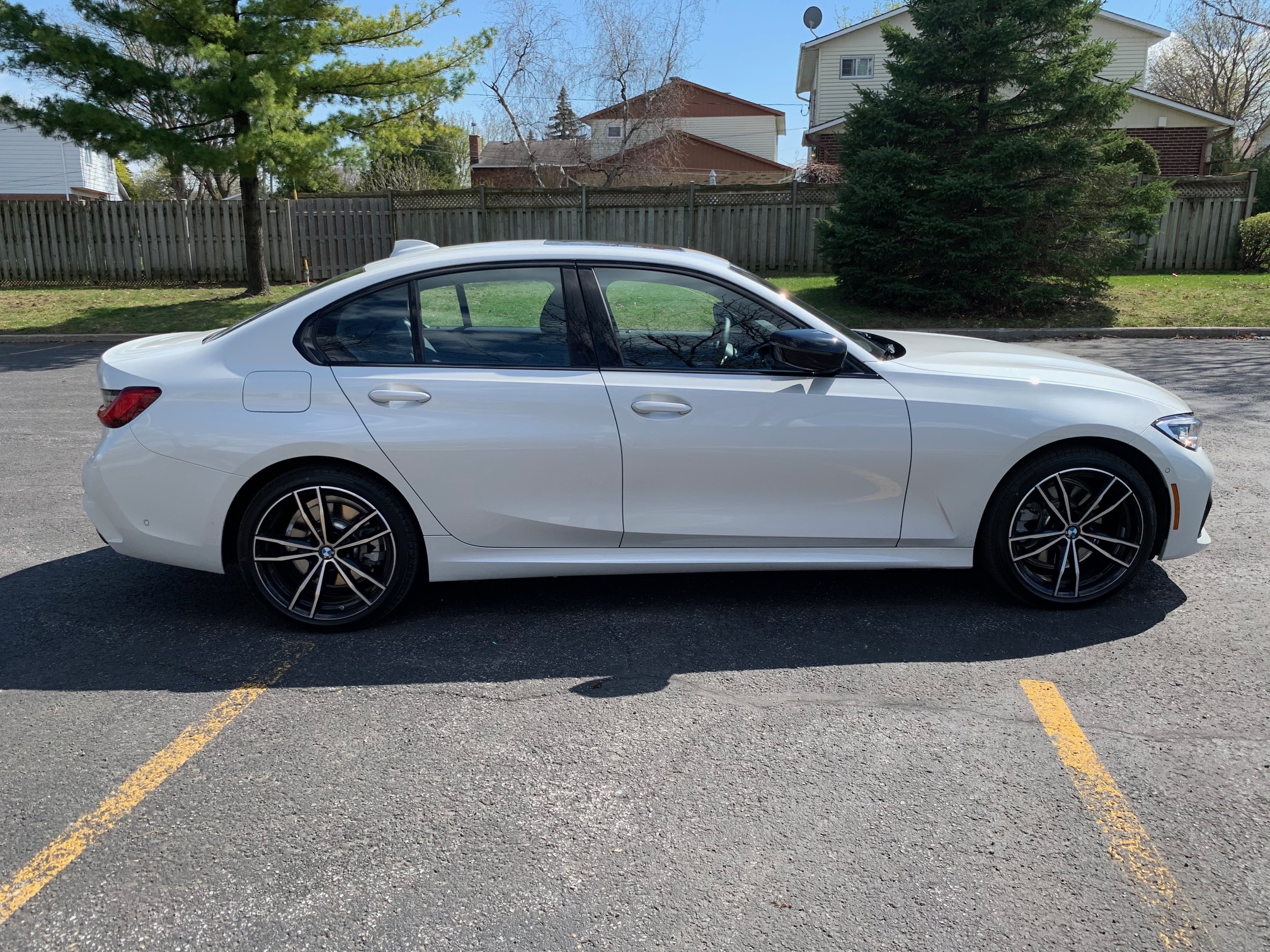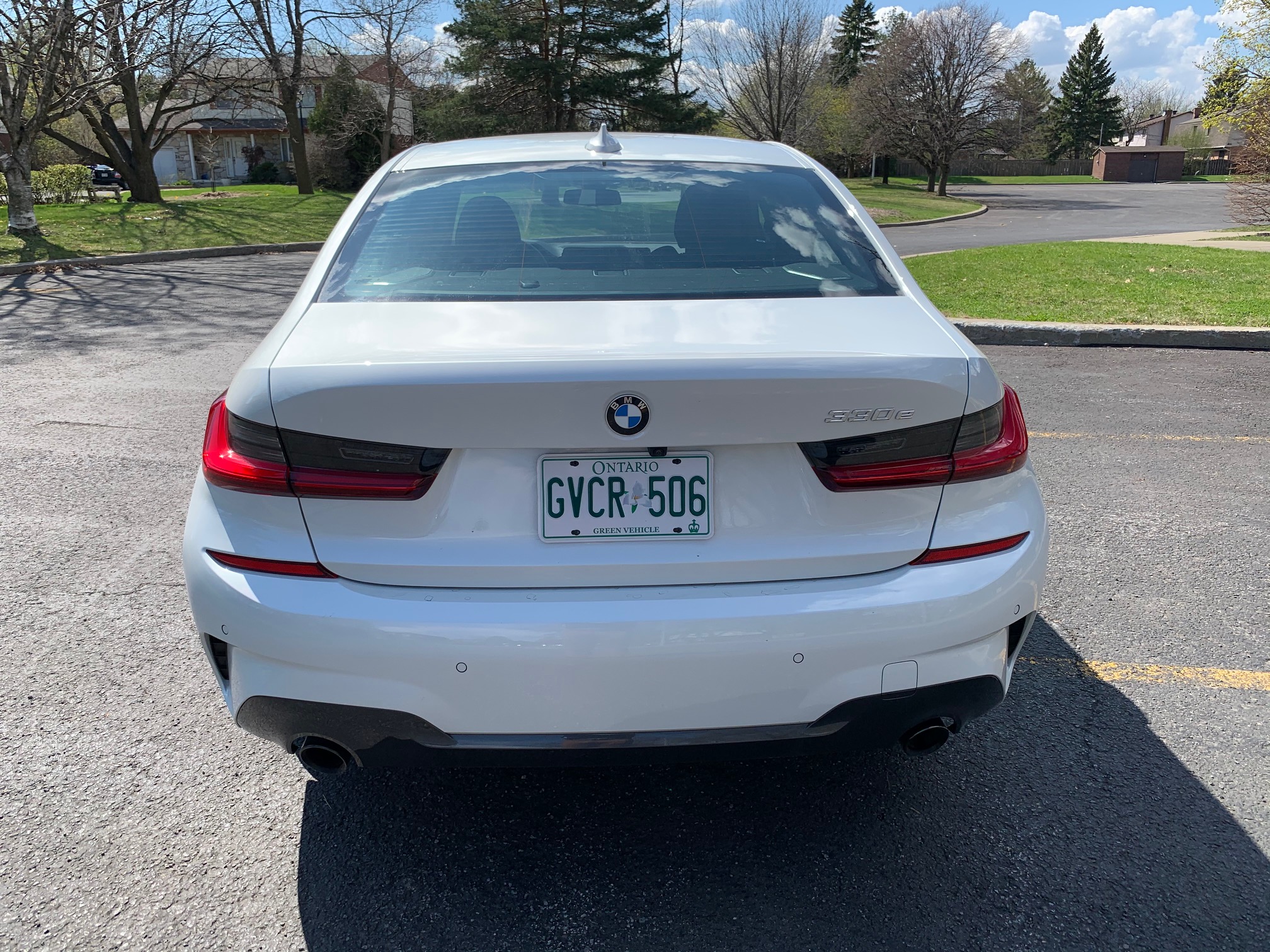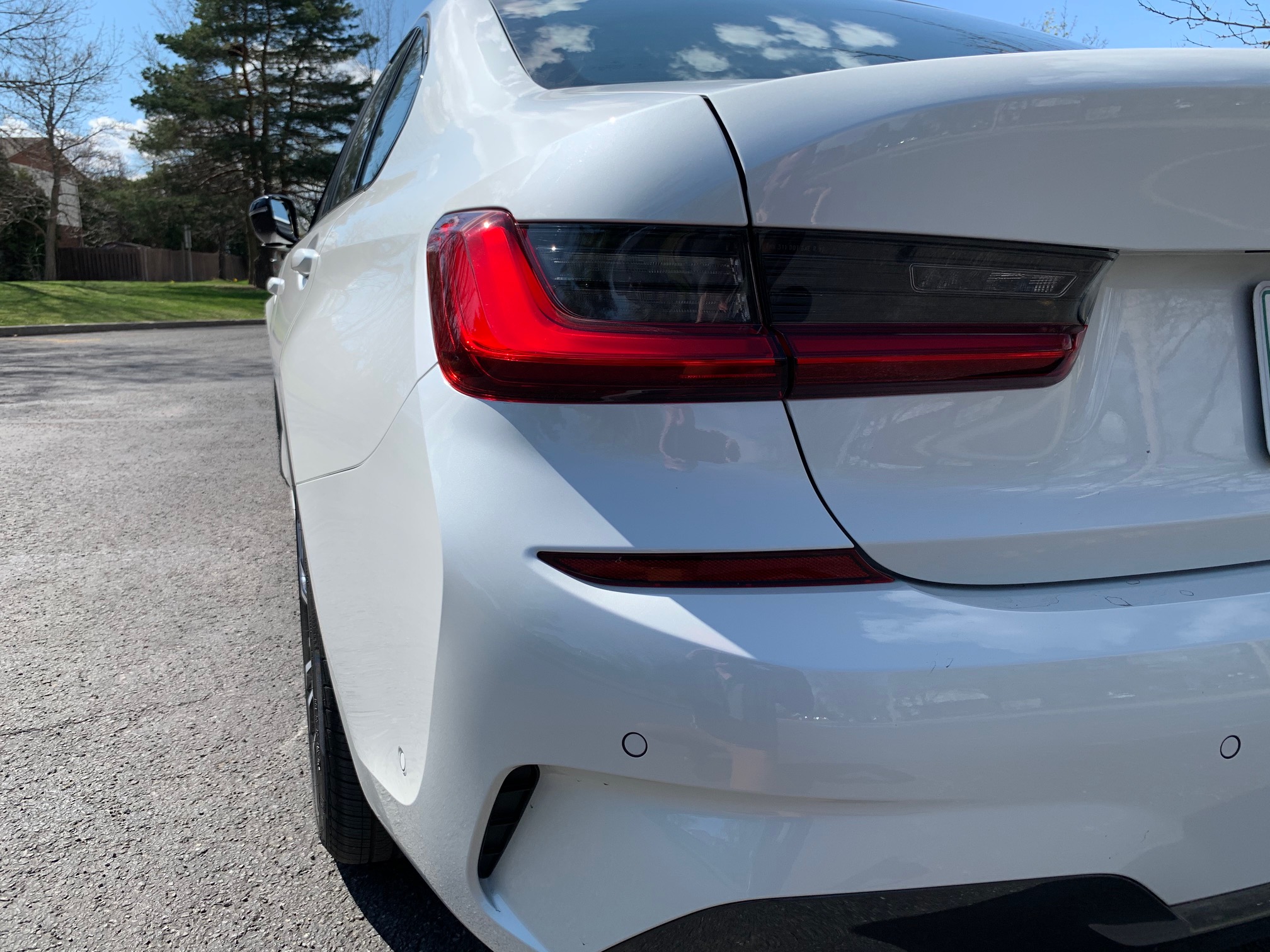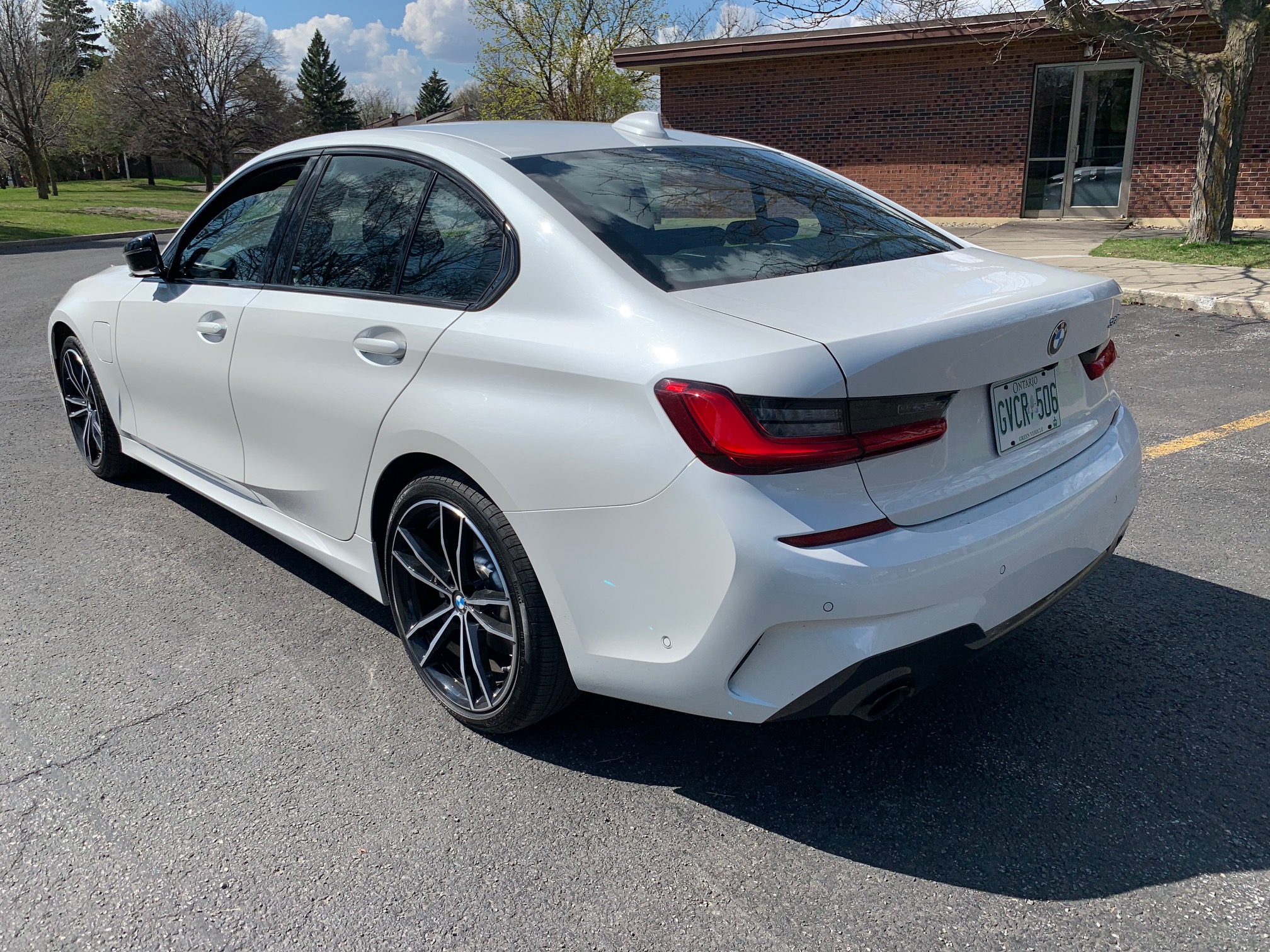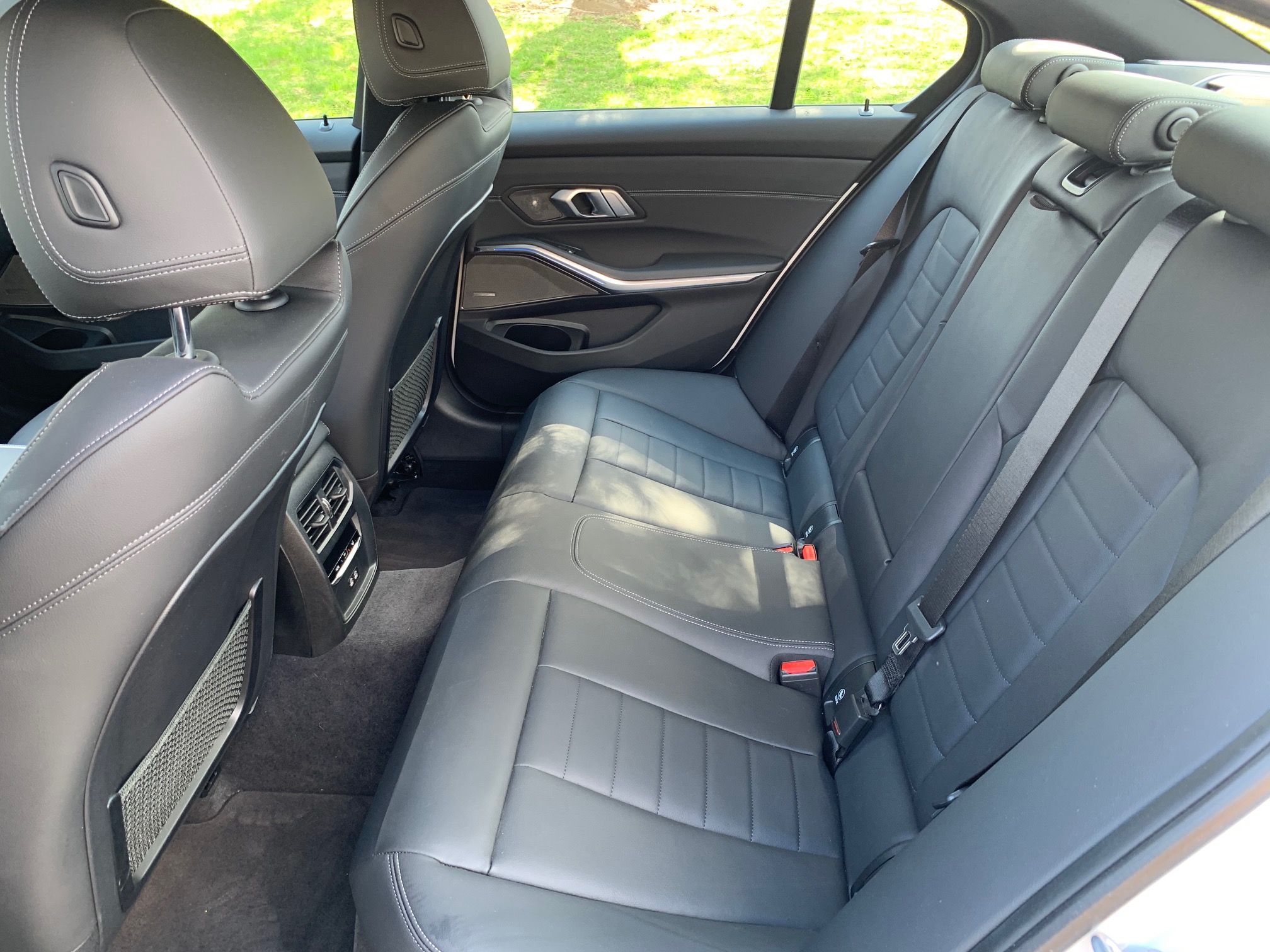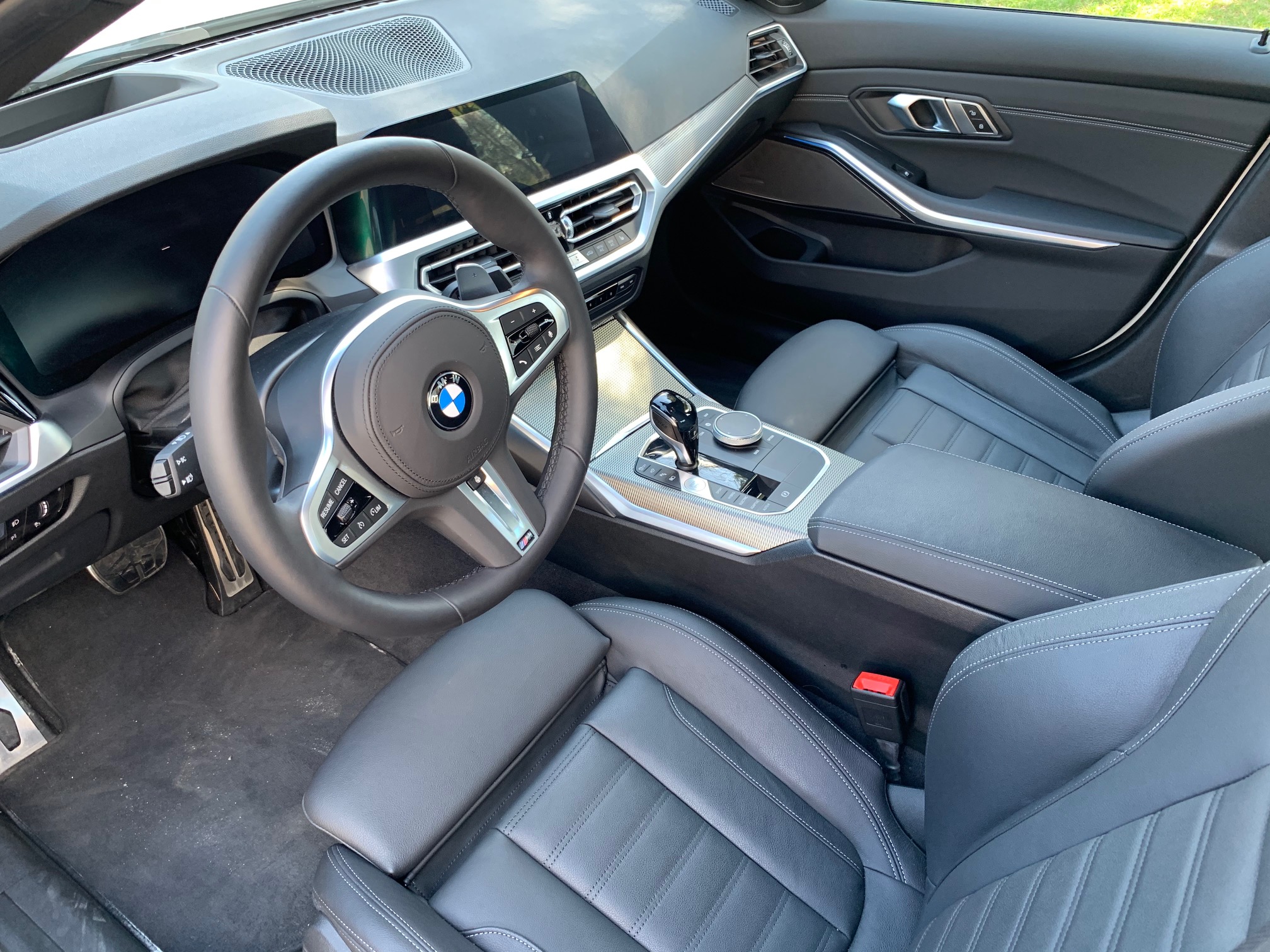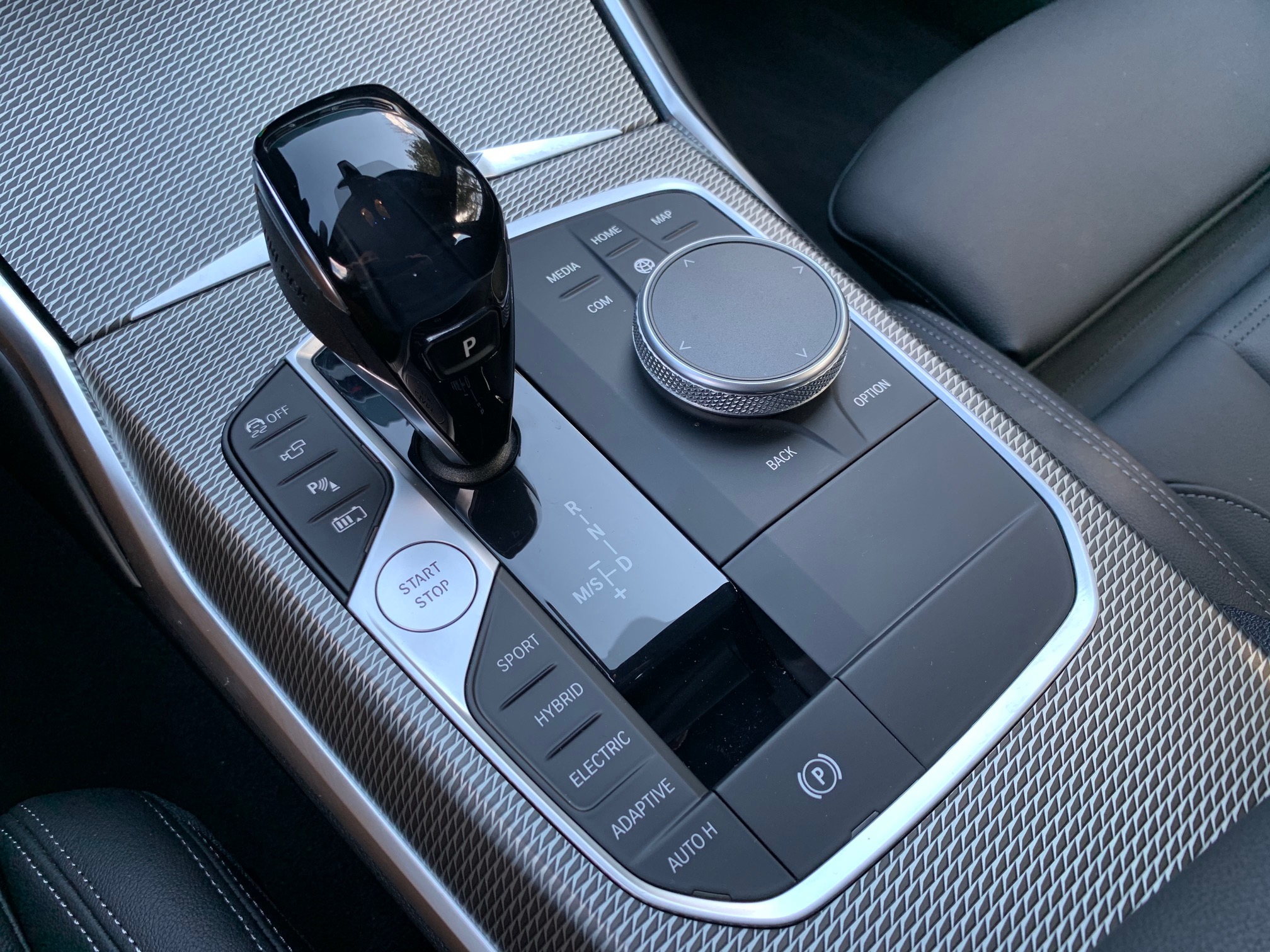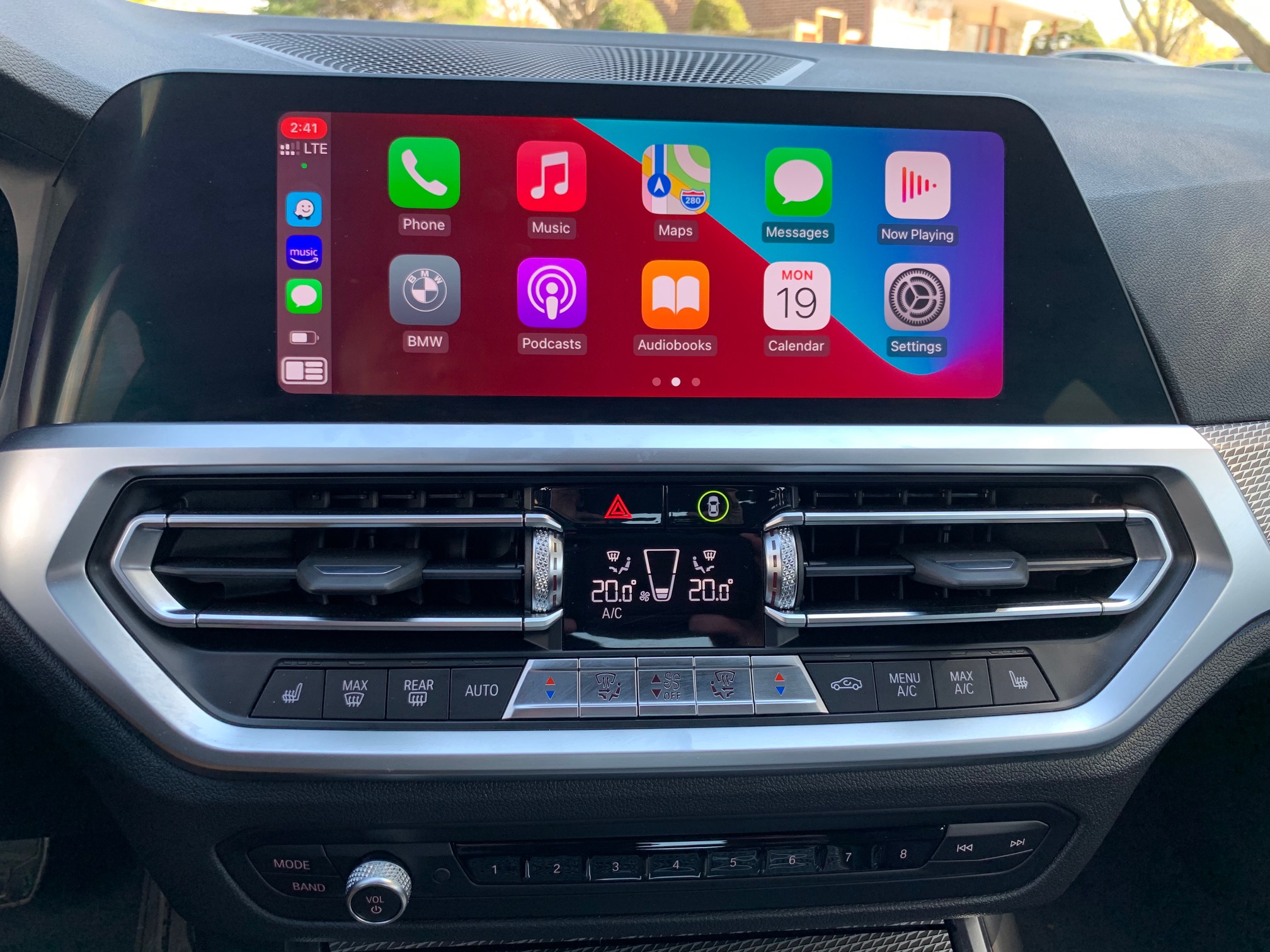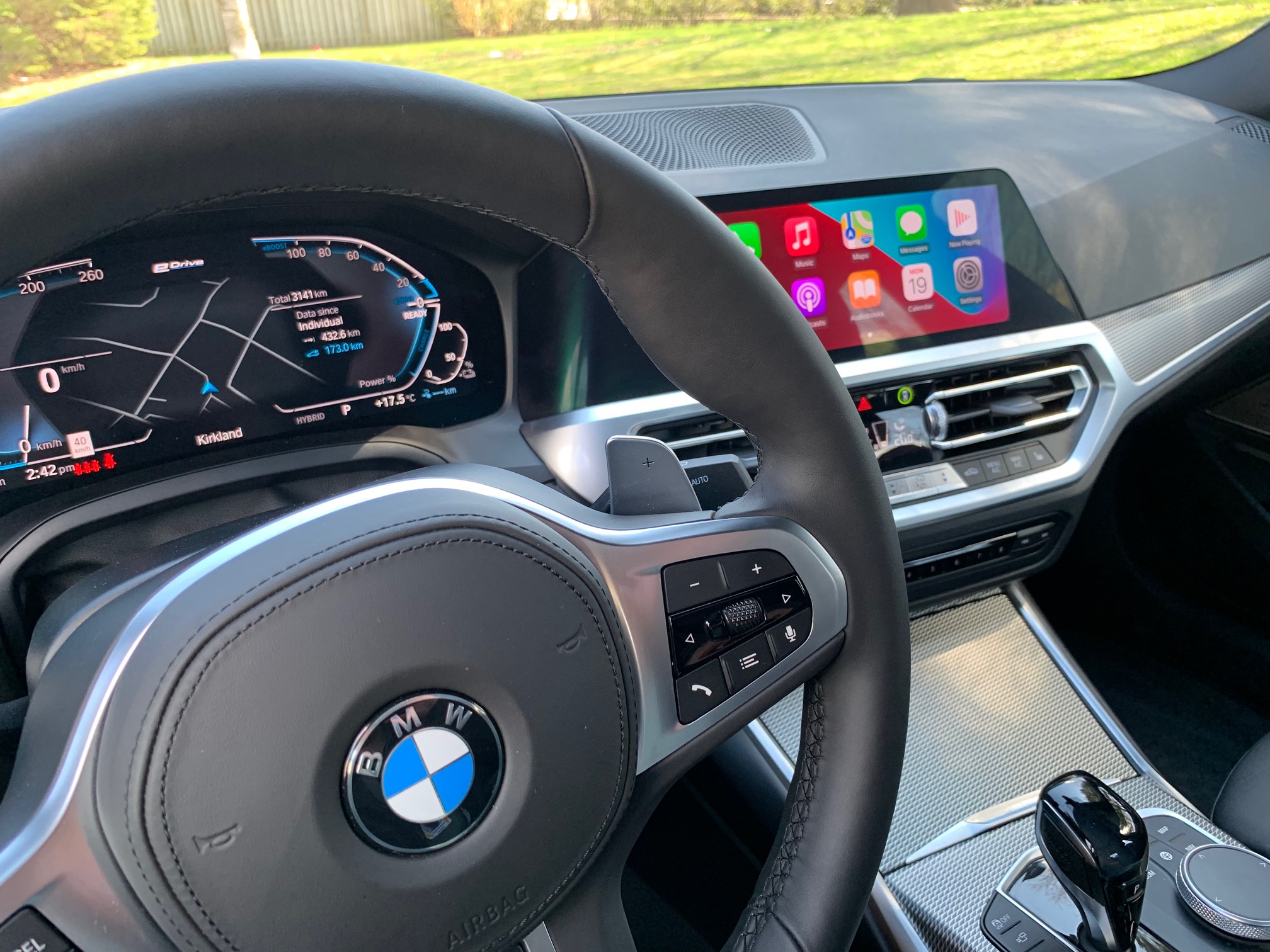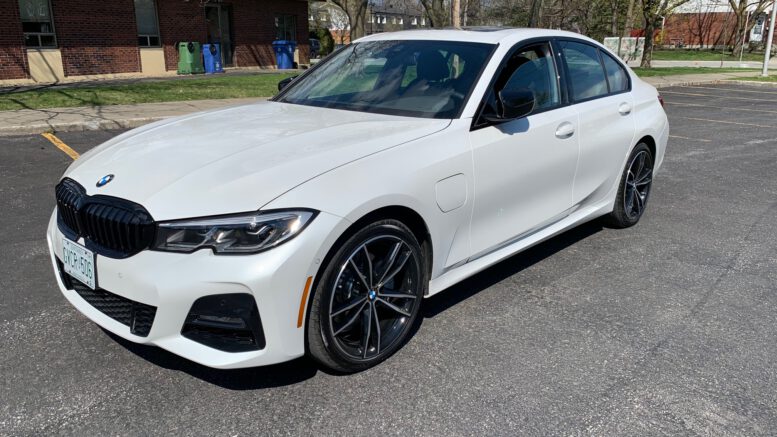Every car seems to be going electric these days and the 3 Series is not excluded. BMW’s bread and butter compact luxury sedan was released last year with a plug-in hybrid electric model although it’s not the first time the 3 Series has offered this. The previous generation also had a PHEV option but it wasn’t too popular.
The 3 Series is fresh off a new design for it’s 2019 model year and looks fantastic. Up front, the design was modernized to include a few fascia, a larger kidney grille and a new interpretation of the car’s LED twin headlight design. It looks more in line with the new 5 Series design with enough differences to avoid the I-can’t-tell-the-models-apart problem like some of the competition has. The main changes are at the rear with the new slim, L-shaped taillights. They hit the ball out of the park with this design, giving the sedan a unique look that is a nice departure from the previous generation. Overall, the new 3 Series is 76 mm longer, 16 mm wider and 1mm higher than its predecessor.
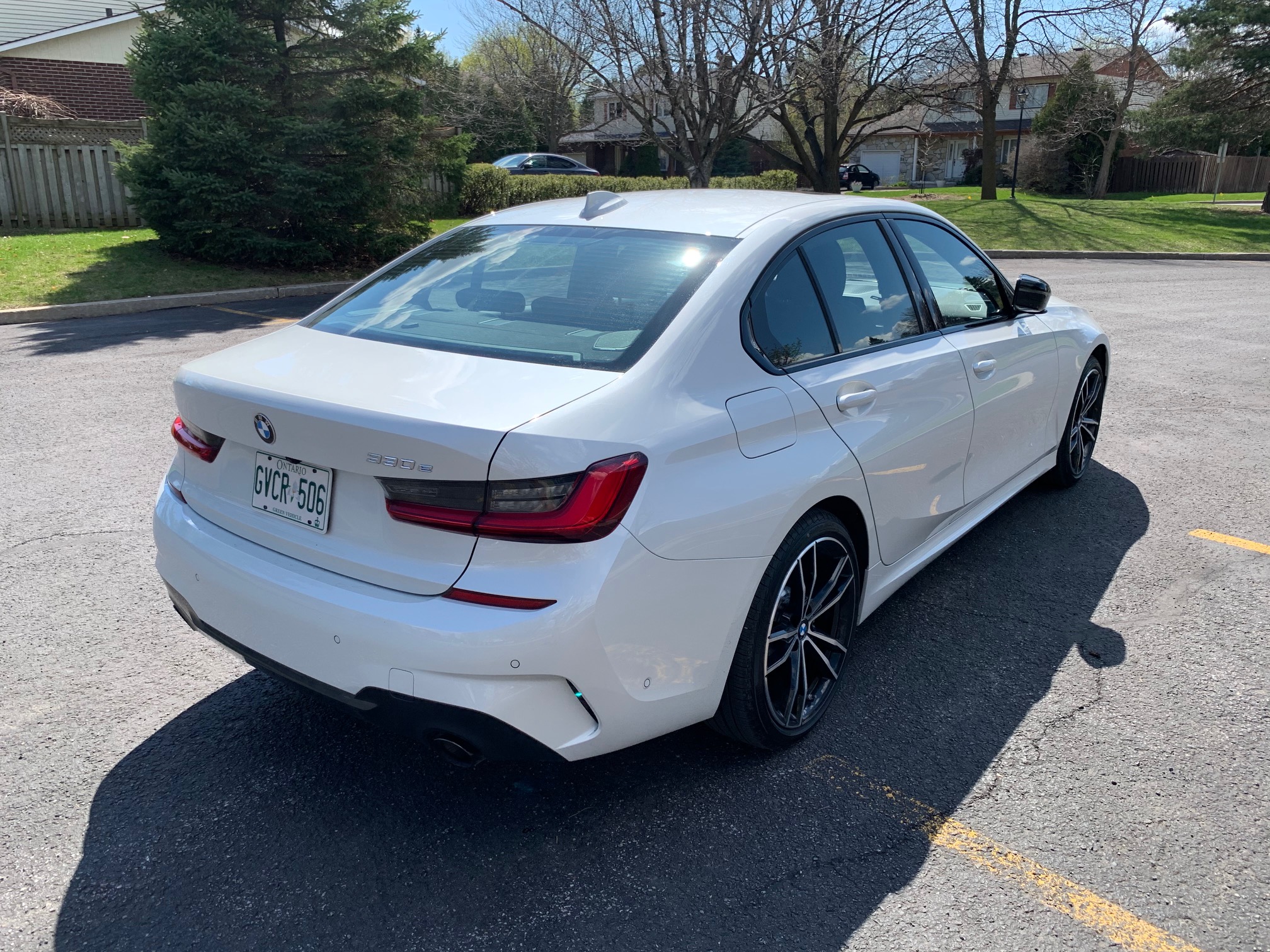
Of course, you can still get the vehicle with a four- or six-cylinder gasoline engine but this plug-in hybrid is certainly interesting, being the least expensive one of the bunch. That runs contrary to what usually happens with the PHEV being the most expensive trim level. BMW did this because with a starting price of just $44,950, it can qualify for the Canadian government’s $2500 electric vehicle rebate. $44,950 is a bare bones rear-wheel drive version and if you want all-wheel drive the price jumps to $54,000 and we’re now entering Tesla Model 3 territory.
The cabin has been re-worked but is still quite similar in layout to the previous generation. Audi and Mercedes have cabins that are a little fancier and BMW has chosen to stick with something more traditional. I can appreciate the function over form mentality and the cabin is certainly functional and comfortable. The seating position, steering wheel and control surfaces are designed extremely well. I will point out, however, that there should be knobs for temperature and fan control instead of tiny buttons that you must press many times which can get frustrating.
BMW’s iDrive has a very intuitive interface that is easy to use, in particular because of the rotary dial located on the lower center console. It’s always been the best way to operate a system because it lets the driver’s eyes stay close to the road while not having to reach or lean. I didn’t even use the touchscreen because it’s not necessary. Using an application such as Waze via CarPlay is surprisingly easy as turning the rotary dial flips the cursor around the screen intelligently.

There were connectivity problems with BMW’s wireless Apple CarPlay the last time I drove one but I’m happy to report that those have been resolved. I was able to connect my phone without any issues.
Under the hood we find a turbocharged 2.0-litre four-cylinder engine combined with an electric motor to produce a total of 288 horsepower and 310 lb-ft of torque. It bests the regular non-PHEV 330i by 30 horses and 25 lb-ft of torque. The added weight of the electric motor means it’s slightly less quick when accelerating. The 330e is still very quick all things considered. When in Sport driving mode and you floor it, the car can actually provide a 40-horsepower boost for up to ten seconds form the electric motor. BMW calls this feature eBoost and it’s the greatest thing ever.
When driving around town, the 330e can use all electric power for up to about 30 kilometers. The all-electric acceleration feeling is fun and addictive. When it comes time to switch to gasoline power, the change over is one of the smoothest I’ve experienced from a PHEV. The cabin noise level is what you’d expect from a high-end manufacturer. With short jaunts of under 30 km you could theoretically never use gas but most people will probably get between 4-5 L / 100km.
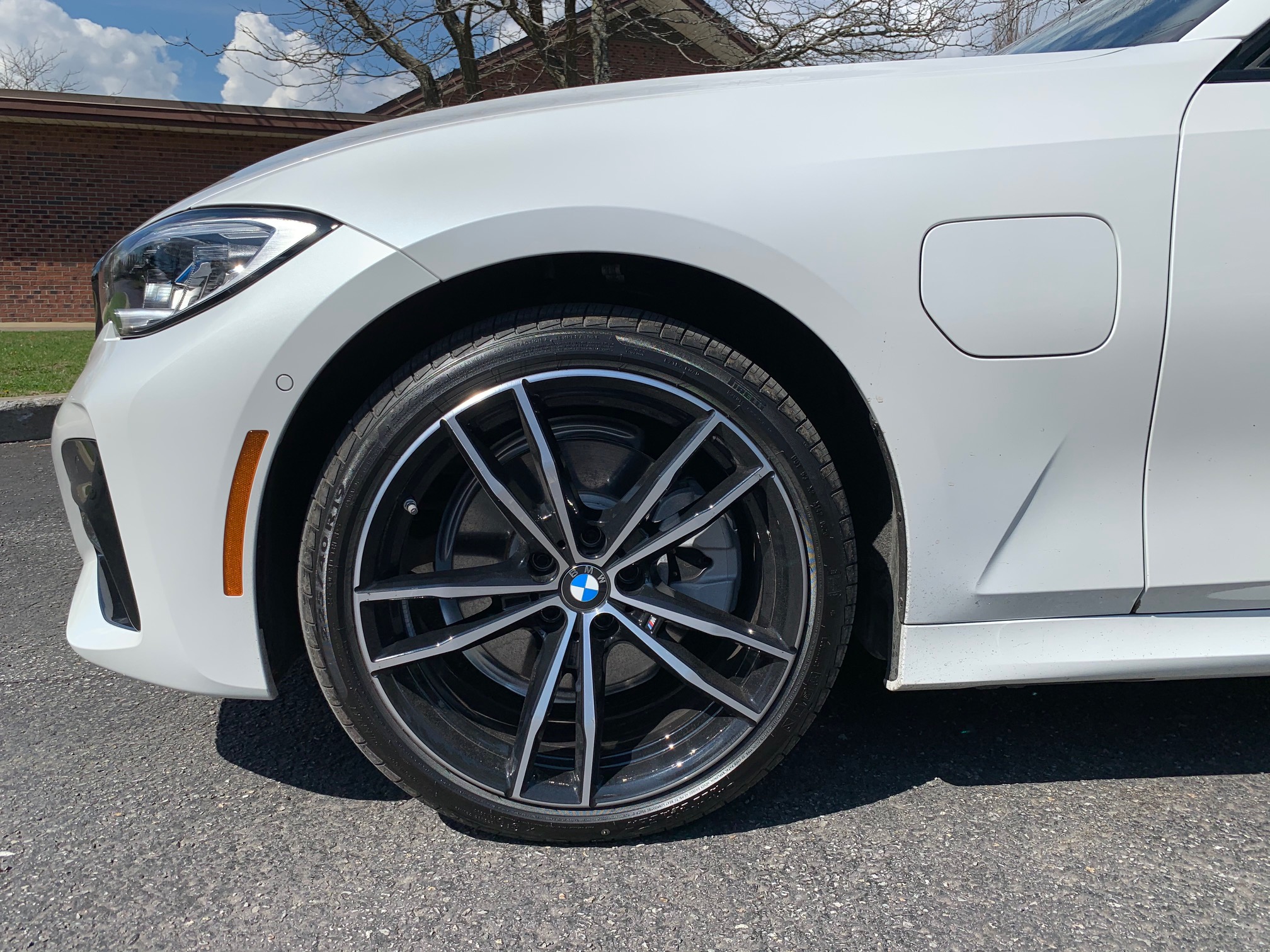
The driving feel is excellent despite the electronic steering. Lots of people complain about the lack of feedback but I don’t share this opinion. The 3 Series is swift and nimble with plenty of road feel. The M-Sport Package’s adaptive suspension makes a large difference in the amount of sportiness it can deliver as well as the amount of comfort on the other end. Regenerative braking serves to boost the battery as much as possible and don’t have the sluggish feel of other brands.
This is a very interesting buy considering the low starting price and excellent driving characteristics. If you’re not quite sold on Tesla but still want electric drive capability coupled with BMW’s reputation for luxury, this might just fit the bill.
